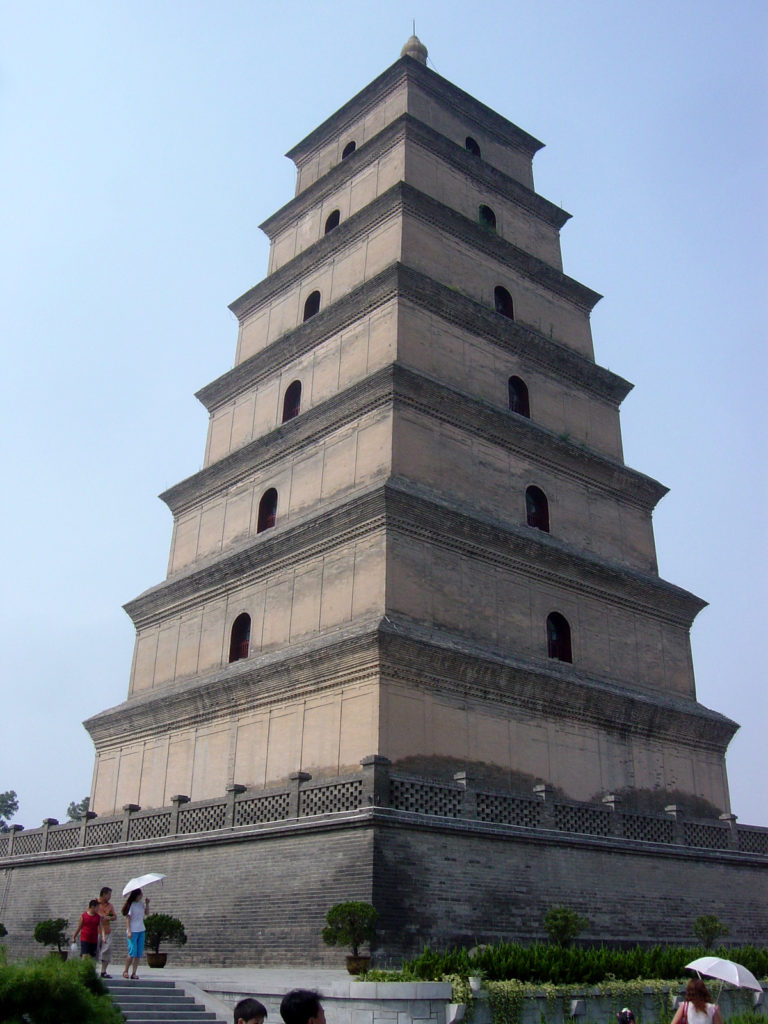
The original pagoda was built during the reign of Emperor Gaozong of Tang (r. 649-683), then standing at a height of 54 m (177 ft).[1] However, this construction of rammed earth with a stone exterior facade eventually collapsed five decades later. The ruling Empress Wu Zetian had the pagoda rebuilt and added five new stories by the year 704 AD. However, a massive earthquake in 1556 heavily damaged the pagoda and reduced it by three stories, to its current height of seven stories.[2] The entire structure leans very perceptibly (several degrees) to the west. Its related structure, the 8th century Small Wild Goose Pagoda in Xi’an, only suffered minor damage in the 1556 earthquake (still unrepaired to this day).[2] The Giant Wild Goose Pagoda was extensively repaired during the Ming Dynasty (1368–1644) and renovated again in 1964. The pagoda currently stands at a height of 64 m (210 ft) tall and from the top it offers views over the current city of Xi’an. During the Tang Dynasty the pagoda was located within the grounds of a monastery, within a walled ward of the larger southeastern sector of the city, then known as Chang’an.[3][4] The monastic grounds around the pagoda during the Tang Dynasty had ten courtyards and a total of 1,897 bays.[3][5] In those days graduate students of the Advanced Scholars examination in Chang’an inscribed their names at this monastery.[3] Close by the pagoda is the Temple of Great Maternal Grace; Da Ci’en. This temple was originally built in AD 589 and then rebuilt AD 647 in memory of his mother Empress Wende by Li Zhi who later became the Tang Emperor Gaozong.
